After putting so much effort into attracting customers to your Shopify store, you’re making a huge mistake if you hand them a tracking number and send them away. Instead, you should keep them engaged with an integrated order-tracking solution that enhances their experience and builds loyalty.
Here at Channelwill, the developer of the #1 tracking app for Shopify merchants, ParcelPanel, we’d love to share with you the ins and outs of Shopify tracking and how you can get it right to elevate your business!

Shopify Tracking: Current State and Challenges
Overview of Existing Features
Shopify provides basic tracking features, allowing customers to track orders through their accounts. Once an order is placed, customers can log in to view the order status, including order processing, fulfillment, and delivery updates. As for Shopify merchants, tracking numbers are found in the “fulfilled section” of the Shopify Admin interface.
Shopify also sends automatic emails as orders progress through fulfillment stages. However, it lacks real-time tracking updates and customization options, which are in high demand.
Plus, tracking information availability is limited to certain logistics carriers, which negatively impacts the customer experience.
Challenges Analysis
As a Shopify merchant, you must often struggle with the platform’s limited real-time tracking features. Customers can’t simply enter their order number on your store’s page to track their package; they must log in, which is inconvenient.
This leads to two main issues: frustrated customers who bombard your support team with inquiries, and missed engagement opportunities when customers track orders on the carrier’s site.
That’s why a dedicated Shopify tracking page is essential to enhance customer experience and boost retention.
What is a Shopify Tracking Page?
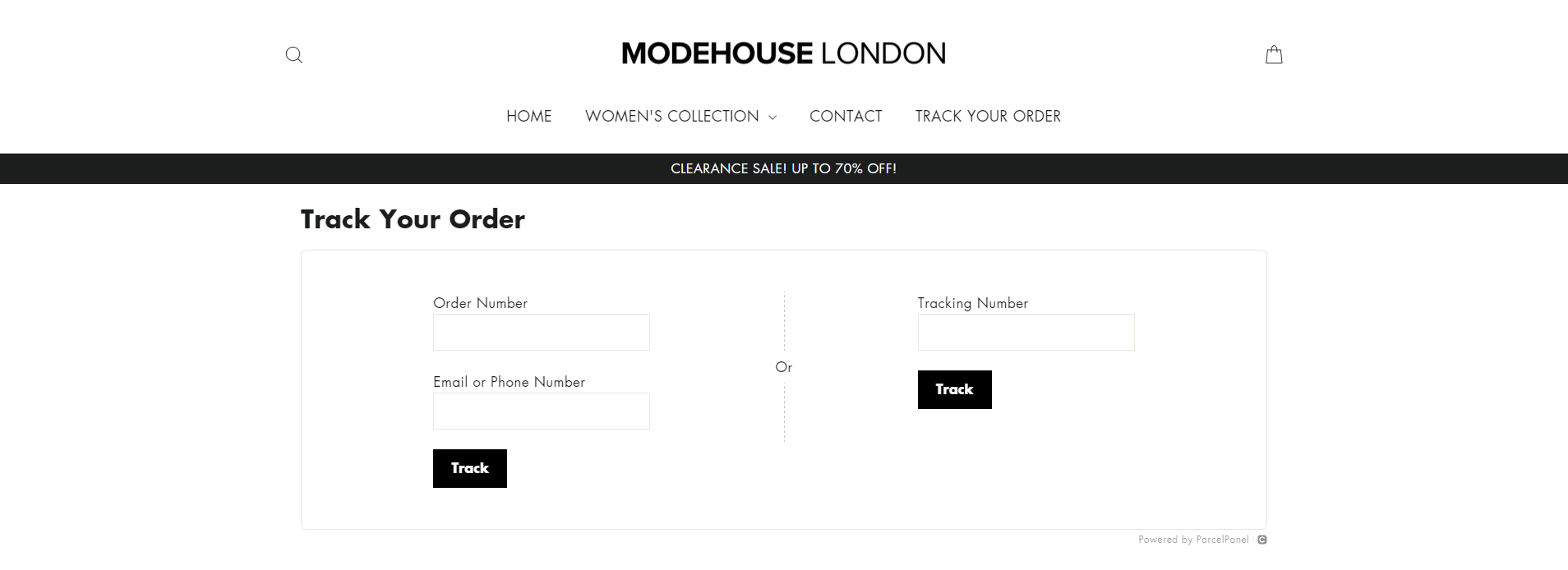
A tracking page is designed to provide customers with a comprehensive view of their Shopify parcel’s journey. Key elements of this page include:
- Order Details: Displays the order number, purchase date, and items, ensuring customers have all necessary information.
- Current Order Status: Offers updates on the order’s progress and location, keeping customers informed.
- Tracking Number and Link: Provides a tracking number and direct link to the carrier’s site for detailed tracking.
- Estimated Delivery Date: Shows the expected delivery date, reducing delivery-related anxieties.
- Customization Options: Allows branding elements like logos, ensuring the page aligns with the store’s image.
These elements enhance customer satisfaction by providing transparency and improving the shopping experience.
The Importance of a Shopify Tracking Page
The Shopify order tracking page is crucial to the customer journey, forming part of the post-purchase phase. Here are five key reasons why a branded “Track Your Order” page is essential:
Enhanced Customer Experience
An order tracking page informs customers of updates on logistics carriers, current status, and delivery time. This elevates the shopping experience, relieving customers’ anxiety.
Increased Transparency and Trust
A tracking page with real-time status updates and precise location details enhances order processing transparency, reassuring customers and building trust.
Reduction in Customer Inquiries
Without an order tracking page, customers are left guessing their order status, leading to anxiety and increased support inquiries. This strains your support team. Needless to say, it’s way more budget-friendly to opt for a shipment tracking solution with flexible pricing rather than bringing on extra help!
Brand Consistency
A branded tracking page reinforces your brand image throughout the customer’s journey, from purchase to delivery. Consistency strengthens your brand’s presence and ensures every interaction aligns with your values.
Improved Customer Retention
You can also boost sales with a “product recommendations” section on the order tracking page—happy customers are 50% more likely to explore new products and spend 31% more. By highlighting enticing options, you can keep them delighted and drive extra sales, enhancing your store’s profitability.

Setting Up Shopify Order Tracking
Ready to take your Shopify store to the next level? This section is your go-to guide for setting up shipment tracking like a pro. Follow these steps, and you’ll be able to keep your customers in the loop about their order status, making their shopping experience smooth and enjoyable!
Enable Shopify Order Status
To enable Shopify order status, follow these steps:
- Go to your Shopify Admin panel: Log in to your Shopify account and navigate to the admin panel.
- Navigate to Settings > Checkout: In the admin panel, click “Settings” and then select “Checkout”.
- Enable Order Status Page: Under the “Order processing” section, ensure that the “Enable order status page” option is checked. This will activate the order status tracking feature in Shopify, allowing customers to view the status of their orders in real time.
Integrate Your Shopify Store
Integrating your Shopify store with a shipping service provider is another vital step in streamlining the tracking process. Here’s how you can do it:
- Go to your Shopify Admin panel: Log in to your Shopify account and navigate to the admin panel.
- Navigate to Settings > Shipping and delivery: In the admin panel, click “Settings” and then select “Shipping and delivery.”
- Add Shipping Carrier: Click “Add shipping carrier” and select the carrier you want to integrate with from the list of available options.
- Follow the Prompts: Follow the on-screen prompts to connect your Shopify store. This may involve entering your account details and API keys provided by the carrier.
- Start Tracking Orders: Once connected, you can start using the shipping services to track your orders. This integration allows you to provide accurate delivery information and real-time shipment updates to your customers.
Integrating your store with a shipping service provider ensures that you can offer reliable and efficient delivery services, enhancing the overall customer experience.

Configuring the Shopify Order Status Settings
Shopify automatically provides an order status page link in the order confirmation email and on the ‘Thank You’ page after checkout. Customers can use this page to view their order status, including tracking information if available.
You can customize the order status page to fit your brand and provide other essential order information, like contact information, shipping address, etc. Following the steps to set up tracking on Shopify:
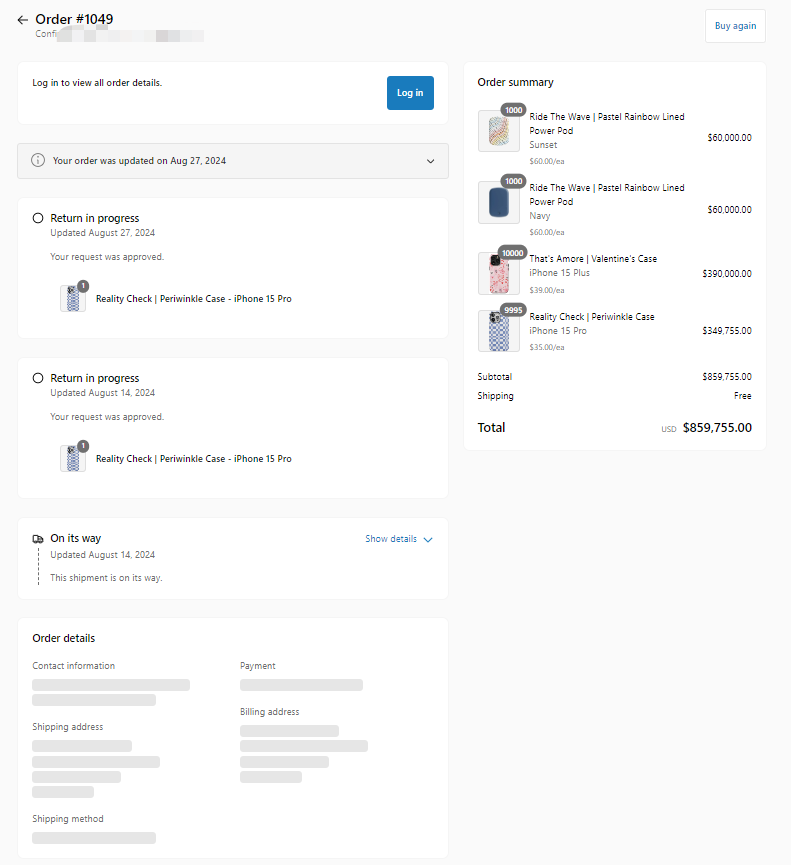
Customize the Order Status Page
Firstly, you must log in to your Shopify Admin panel, navigate to ‘Settings,’ and then click ‘Checkout.’ Look for the ‘Order status page’ in the checkout settings.
Now, you can customize your order status page according to your brand guidelines. Edit the content, such as logos, adjust colors, and edit text to ensure the page is clear and aligns with your brand.
Once you have finished editing, save the changes.

Set Up Shopify Order Status Notifications
Secondly, still in “Settings,” choose “Notifications.” Customize the notification templates before sending messages to your customers.
Review the “order confirmation, shipping confirmation, out for delivery, and delivered” notifications. Ensure the content matches your brand and includes necessary order and tracking details.
Imagine juggling 100 orders and fielding three inquiries per order about delivery progress. That”s 300 questions! With these notifications, you can breathe a sigh of relief as they handle the updates, saving you from a potential avalanche of customer queries.
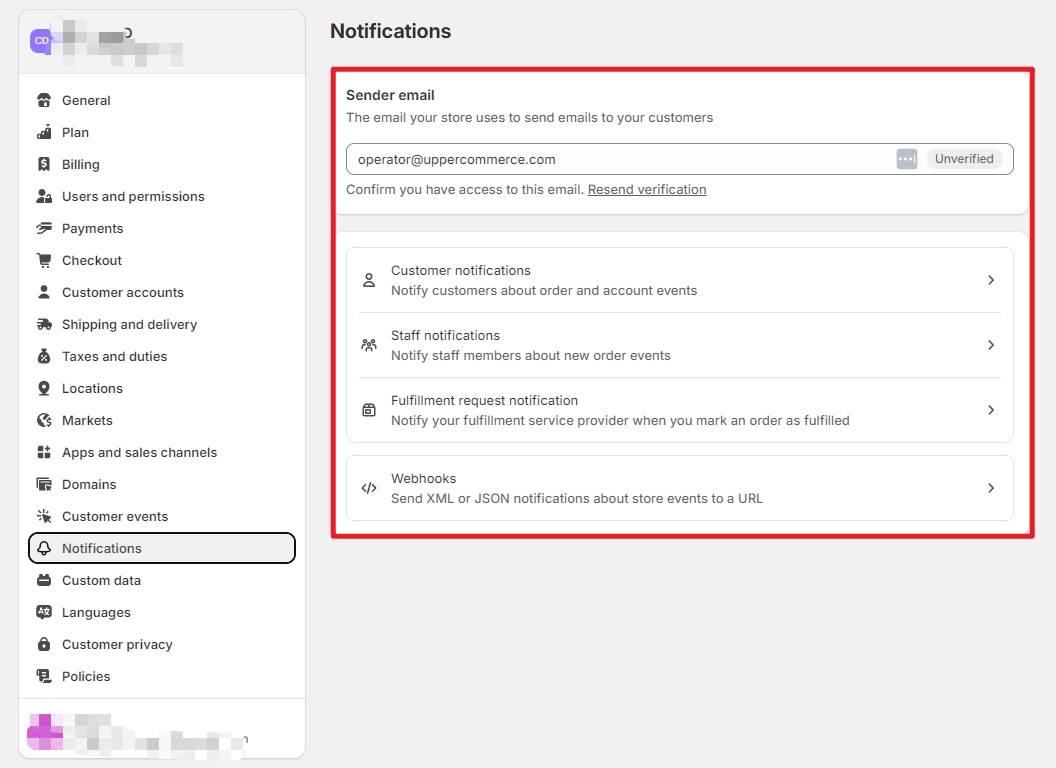
Ensure Accessibility of the Order Status Page
Thirdly, add navigation links to your order status page. Go to “Online Store” and select “Navigation”. Add a link to the Order Status Page in your main navigation menu or footer to make it easy for customers to find.
In addition, add the link to the order confirmation and shipping notification emails to allow customers to access the page directly from their inbox.
Test the Order Status Page
Want to know exactly what your customers see when they check their order status? It’s time to step into their shoes. Start by creating a test order in your Shopify store. Once that’s done, add a tracking number to the order—this is key to making sure everything works smoothly.
Here’s a quick rundown:
- Grab the tracking number: Get it from your logistics provider once the package is ready to ship.
- Log in to Shopify: Head over to your order management page.
- Find the order: Select the order you’re working on and click “Edit.”
- Enter tracking info: Fill in the logistics company and tracking number in the “Logistics Information” section.
- Save and notify: Hit save, and Shopify will automatically send the tracking details to your customer.
Once you’ve done this, double-check everything on the test order status page. Does it look good? Are notifications going out as they should? If yes, you’re all set! If not, tweak things until they’re perfect.
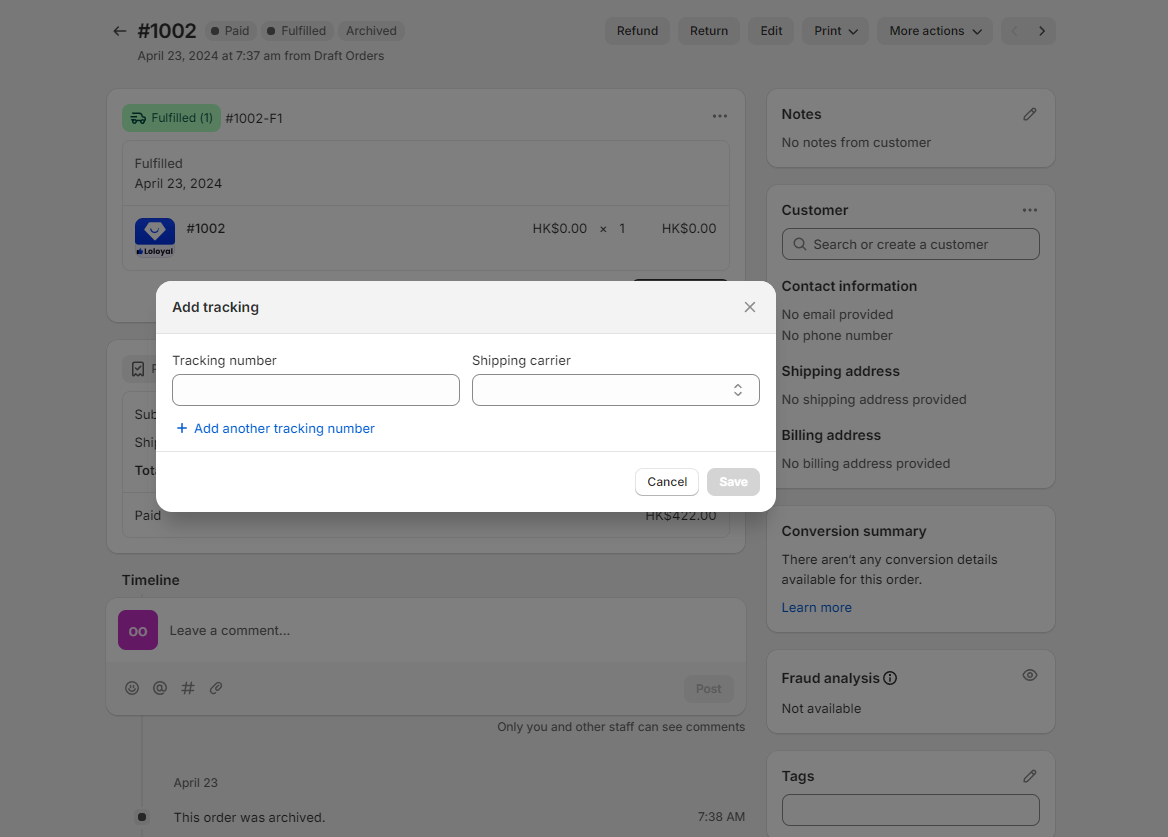
Shopify Liquid vs. Order Tracking App: Which is Better?
The Specific Order Lookup Page
Customers love knowing exactly where their packages are, and giving them that information can be the difference between a happy repeat buyer and a frustrated one-time shopper. But how should you set up your tracking page? Should you roll up your sleeves and dive into Shopify Liquid, or let a third-party app do the heavy lifting?
It’s time for the ultimate showdown: Shopify Liquid vs. Order Tracking Apps. Let’s see how they stack up in this head-to-head comparison.
| Feature | Shopify Liquid: The DIY Approach | Order Tracking Apps: The Plug-and-Play Option |
| Customization | Total creative freedom! You can design a tracking page that perfectly matches your brand. But…you’ll need some coding chops to pull it off. | Pre-designed templates make setup fast and easy, but customization is limited. |
| Ease of Use | If you’re comfortable with Shopify Liquid (and maybe some HTML/CSS), you’re good to go. If not, it might feel like learning a new language. | No coding required! Just install the app, tweak a few settings, and you’re ready to roll. |
| Functionality | Basic tracking features only—no real-time updates or fancy notifications here. | Packed with features like real-time shipment tracking, branded pages, and instant notifications. |
| Integration | Fully integrated into Shopify’s backend, but setting it up can be time-consuming and tricky. | Seamlessly connects with third-party apps for enhanced functionality in minutes. |
| Cost | Free to use (yay!), but you might need to hire a developer for setup or troubleshooting (boo!). | Most apps come with subscription fees, but they save you time and effort—is it worth it? |
Use ParcelPanel to Revolutionize Shipment Tracking
Looking for an app to upgrade your Shopify store’s post-purchase experience? ParcelPanel is the ultimate solution to ensure no more “Where’s my order?” chaos—just happy customers and smooth deliveries!
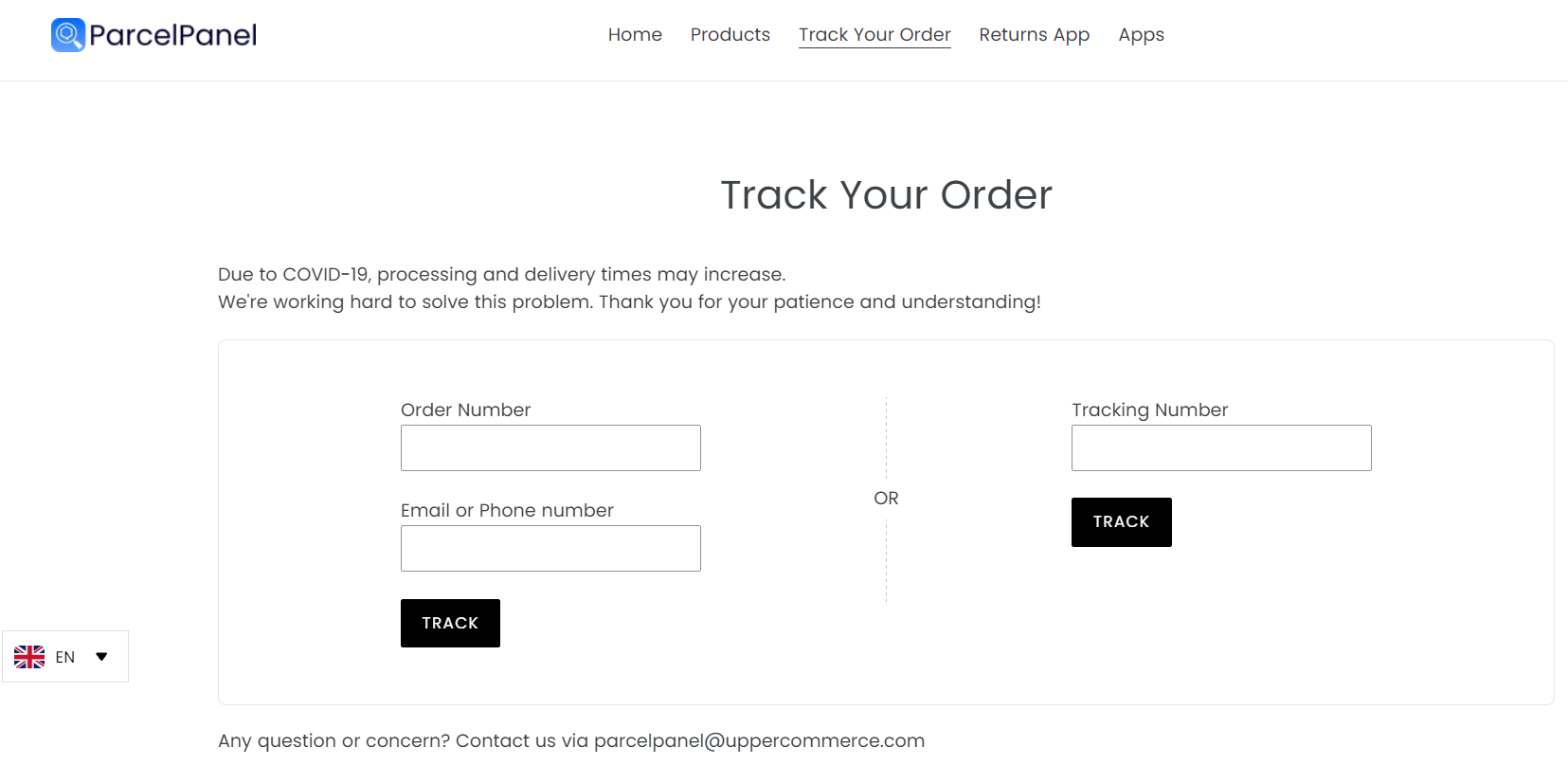
Real-Time Tracking
Connected with over 1,500 carriers worldwide, ParcelPanel excels in track & trace capabilities. It offers real-time shipment tracking and estimated delivery dates so your customers stay updated on every stage of their order. Plus, you can even customize shipment statuses to match your business needs.
Automated Email Notifications
Shipping notifications help reduce customer anxiety and improve satisfaction by providing timely updates on their purchases, and the tracking link directs customers back to your website.
“Your order’s shipped!” → “Your parcel is OUT FOR DELIVERY!” → “IT’S HERE!!!” ParcelPanel auto-sends these updates, cutting “WISMO” tickets by up to 60%.
Enhanced User Experience
No tech skills? No problem! ParcelPanel is easy to set up and user-friendly. You don’t need to be a tech whiz to set it up.
What’s more, it supports multiple languages, which means it is accessible to customers worldwide.
Whether you’re a small startup or a large enterprise, ParcelPanel is here to level up your logistics game and keep your customers smiling.
Brand Customization
Strengthen your brand with personalized tracking pages and emails that align perfectly with your store’s image.
Add logos, colors, and templates to create a seamless experience that boosts customer confidence. You can even include product recommendations on tracking pages and coupon codes in shipping notification emails to encourage repeat purchases.
Robust Analytics
ParcelPanel’s powerful analytics tools give you actionable insights into shipping performance and post-purchase engagement. Data like shipping duration, top destination countries, order history (sales generated by ParcelPanel), etc., allows businesses to discover trends, prevent problems, and enhance operational methods.
SEO Benefits for Higher Visibility
ParcelPanel helps you optimize tracking pages for search engines by customizing URLs, titles, and descriptions. This improves your site’s visibility, driving more traffic and potential sales.
Case Study: Laifen’s Success Story
Take Laifen, a Shopify merchant whose customer satisfaction skyrocketed after using ParcelPanel. By reducing “Where Is My Order” (WISMO) queries and improving brand loyalty, ParcelPanel transformed its post-purchase experience into a competitive advantage.

Conclusion
Tracking orders isn’t just about logistics; it’s about creating a stellar customer experience.
You can gain a competitive advantage by mastering Shopify’s tracking features and adding tools like ParcelPanel.
Think real-time updates, branded tracking pages, and fewer “Where’s my order?” headaches. It’s time to ditch the guesswork, delight your customers, and deliver an experience that keeps them coming back for more.
Because when your tracking game is strong, your business wins big! Start with a free plan today!
#1 Shopify Tracking Solution for eCommerce
FAQ
Yes, Shopify provides basic order tracking features that allow merchants to monitor orders directly from the Shopify Admin dashboard. Customers also receive automated email notifications about their order status, including shipping and delivery updates from the carrier.
To track individual orders, simply log in to your Shopify Admin panel, navigate to the “Orders” section, and select the specific order you want to view. From there, you can access tracking details and update shipment information.
ParcelPanel takes Shopify tracking to the next level. Log in to your ParcelPanel Admin dashboard and head to the “Orders” tab for a detailed view of all shipment statuses. With automated tracking updates and real-time notifications, managing your orders has never been easier!
Note: This blog was originally written in English and translated using an automated tool to make the content accessible to a global audience. We believe in sharing valuable insights with everyone and apologize for any inaccuracies. If you spot any errors, please feel free to contact us for corrections. Your feedback helps us improve and ensures the content’s value is fully realized.












